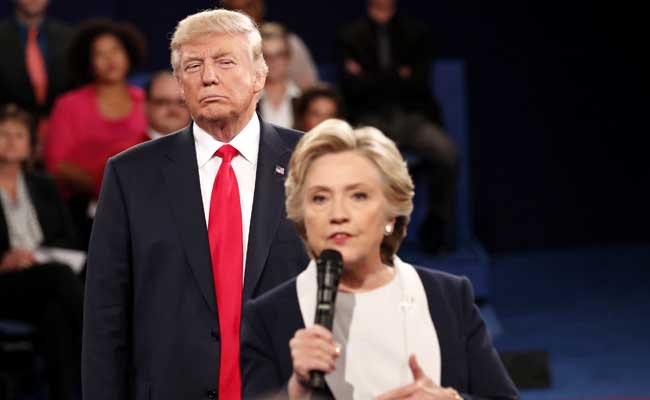
On Tuesday, November 8, America will vote for its next President. The US election, held once every four years, takes place on the Tuesday following the first Monday in November, as spelled out in the US Constitution.
Here is a 10-point guide:
Voters in 50 states and the city of Washington choose among the candidates for President and Vice President. The popular vote in each state determines the selection of a set of members of the electoral college, who pledge to support a given candidate. There are 538 members of the electoral college, with the number from each state based on its population size (just like our Lok Sabha).
A state has one elector for each of its members of the House of Representatives, and one for each of the state's two senators (every US state has two senators, irrespective of its size).
To win the US presidential election, you need 270 electoral college votes, an absolute majority of the 538 electors.
California - the most populous state - has 55 electors, Texas has 38, and New York and Florida have 29 each. At the other end of the spectrum, lightly populated Alaska, Delaware, Vermont and Wyoming have only three electors each.
Members of the electoral college officially elect the president and vice president on December 19 in what is a mere formality. Why? Each party in each state gives their list of members of the electoral college. So in California, the Democrats and Republicans would each provide a list of 55 members. These electors are normally party officials, and in most states are legally/duty bound to vote for the winner of the election in their state.
The US system is very different from what we have in India. Chief among them - you can win the popular vote and still lose the election. Like Al Gore did to George W. Bush in 2000. In the overall popular vote, Gore won 50.99 million to 50.46 million votes for Bush. Bush won Florida's popular vote by just 537 votes, but got all the 25 electoral votes, which gave him 271 nation-wide electoral votes to Gore's 265.
Winner-Take-All is the criteria in all states except two, Maine and Nebraska. So the candidate that gets the largest number of votes (not a majority) is declared to have won the state and gets all the electoral votes of that state. So, if Hillary Clinton wins California, as Democrats have done for a long time, she would gain 55 electoral votes, or the complete slate of electors listed by the Democratic party in California.
Some states historically support the Democratic candidate election after election, while others are just as resolutely Republican. Candidates thus concentrate their efforts on about a dozen states prone to shift back and forth between the parties, often determining the final result. The most important of these are the "battleground" or "swing" states with the largest number of electors, like Florida (29), Pennsylvania (20) and Ohio (18).
Unlike India, where counting is often held days or even weeks after voting, in the US, counting begins as soon as voting is over in a particular state. The results are also publicly announced. This means that the East Coast starts counting while voting in the West may not have been completed.
While in India, most TV channels start announcing trends for seats, all US TV networks and, increasingly, news websites, start calling or declaring states in favour of one or the other Presidential candidate within minutes of voting ending in that state. This declaration of the winner of a state is based on previous voting patterns ( who has won that state for years) and exit polls. Where the counting is closer, as in the Battleground States, the networks wait until they have much more actual voting data before projecting a state in favour of a particular candidate.

